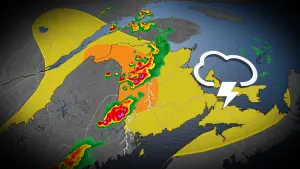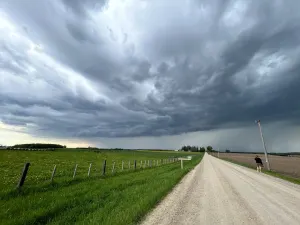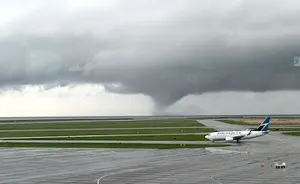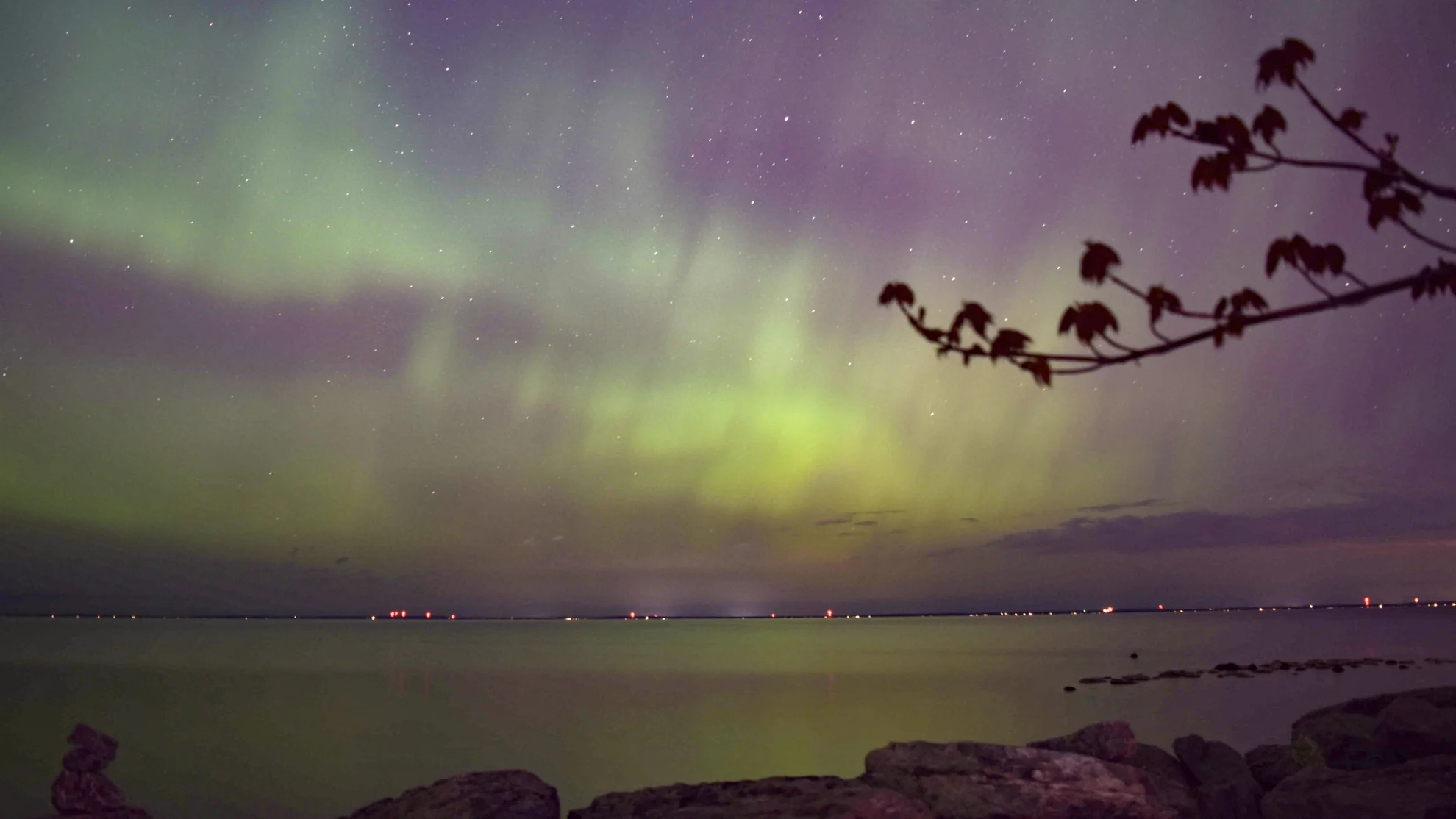
Intense solar storms keep aurora potential high over the weekend
Don’t sweat if you missed out on Friday night’s dazzling show—you may have additional opportunities on Saturday and Sunday nights
The most extreme geomagnetic storm since 2003 continues this weekend with additional chances to see auroras across Canada and much of the United States on Saturday and Sunday.
Friday night’s exceptional display of the northern lights was widely seen across the Northern Hemisphere, with colours visible in the sky as far south as the Caribbean. This is likely the most widely seen aurora event of the modern technological era.
DON'T MISS: Once-in-a-lifetime northern lights dance across North American skies

Several strong coronal mass ejections (CMEs) bursting out of the Sun’s active outer atmosphere reached Earth on Friday. The surge of plasma and magnetic field ionized gasses in the upper atmosphere, glowing high above as a shimmering field of greens, purples, blues, and whites.
The solar storm continues this weekend as NOAA’s Space Weather Prediction Center (SWPC) monitors large disruptions in the upper atmosphere.
Widespread auroras are expected across Canada and much of the U.S. again on Saturday night, with the northern lights possibly making a third consecutive appearance on Sunday night.
The timing varies based on location, but the activity will arrive in waves—pulsing and waning at different times through the evening. Keep looking up any time between twilight and dawn.
WATCH: Once-in-a-lifetime auroras wow Canada on Friday night
Thicker clouds for some on Saturday night
As always, clouds are the make-or-break moment for the best view of a celestial event.

Folks in southern Ontario may not get as lucky as they did on Friday night as cloud cover may obscure the sky during the evening. Clouds will also put a damper on aurora spotting for coastal sections of Nova Scotia, as well as much of Newfoundland, including St. John’s.
MUST SEE: The magical experience of seeing the aurora for the first time
Wide stretches of clear skies may make for favourable viewing across northern sections of Ontario and Quebec, as well as a decent chance to see an aurora for New Brunswick, Prince Edward Island, and Labrador.

Farther west, the southern Prairies are your best bet to catch the aurora amid clear skies. Lingering clouds in Manitoba and smoke on the northern and central Prairies may obscure the view. A lack of clouds in most of British Columbia could allow for another great view Saturday night.
As always, your best opportunity to spot the aurora exists in a dark spot that’s free from clouds. You may need the assistance of your smartphone camera’s night photo feature to really see the detail and colours in the sky.
Auroras are part of an increase in solar activity
We’re approaching the maximum of Solar Cycle 25, a period during which solar flare and sunspot activity increases—along with more opportunities for CMEs that may produce auroras.
Experts rate the intensity of geomagnetic activity on the Kp Index, which ranges from Kp 0 on the low end to Kp 9 on the high end. Values around Kp 7 are sufficient for nationwide aurora visibility.
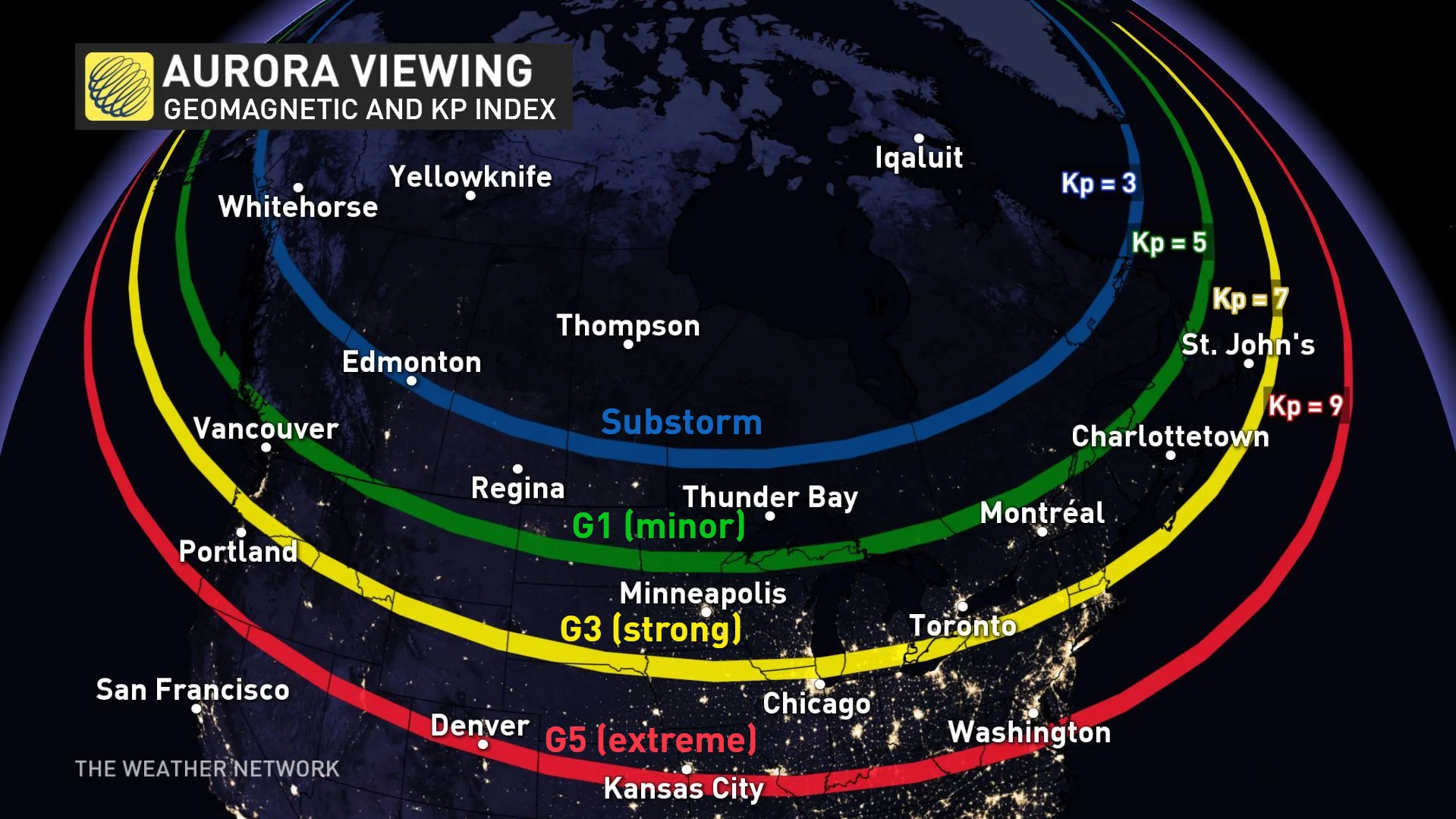
MUST SEE: Solar max is approaching. Here’s where and how to see the Northern Lights
Several geomagnetic storms since late last year have produced widely viewed auroras in the Northern Hemisphere, including a G3 (strong) storm in November that made the northern lights visible as far south as Virginia and Ukraine.
Auroras aren’t the only effects of a geomagnetic storm. The surge of charged particles into the atmosphere can cause radio blackouts and GPS disruptions. The strongest geomagnetic storms can even threaten power grids.
Header image courtesy of Angie Gibson in Collingwood, Ontario.








